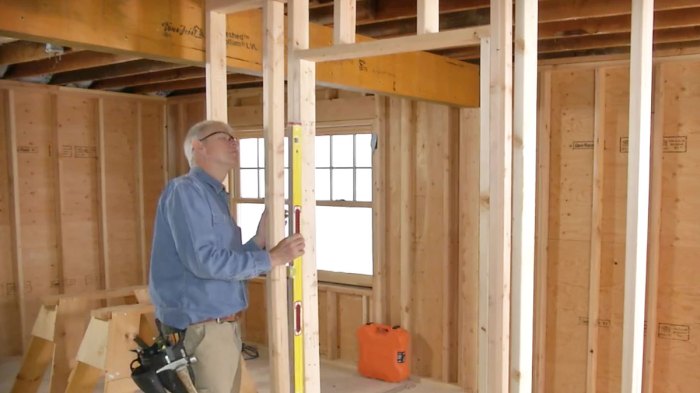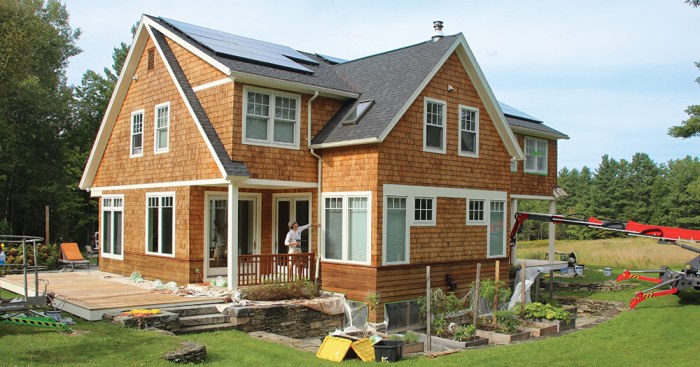Embark on a journey of transforming your exterior space with the invaluable insights of Fine Homebuilding Tips. From selecting materials to implementing techniques, this guide will equip you with the knowledge needed for a successful project.
Understanding Fine Homebuilding Tips
When it comes to exterior projects, using fine homebuilding tips can make a significant difference in the outcome of your project. These tips are designed to help you achieve a high-quality, long-lasting result while ensuring structural integrity and aesthetics.
Key Areas for Fine Homebuilding Tips
- Foundation: Properly preparing the foundation of your exterior project is crucial for stability and longevity. Fine homebuilding tips can guide you on the best practices for foundation construction, including drainage solutions and soil compaction.
- Weatherproofing: Protecting your exterior project from the elements is essential. Fine homebuilding tips can provide insights on choosing the right materials, sealing techniques, and waterproofing solutions to ensure durability and weather resistance.
- Structural Integrity: Ensuring that your exterior project is structurally sound is paramount. Fine homebuilding tips can offer advice on framing techniques, load-bearing considerations, and reinforcement methods to enhance the strength and stability of your construction.
Examples of Successful Projects
One example of a successful exterior project where fine homebuilding tips were applied effectively is a custom-built deck. By following tips on proper footings, framing, and deck board installation, the project resulted in a sturdy and visually appealing outdoor space that has stood the test of time.
Another example is a home renovation that included siding replacement. By utilizing fine homebuilding tips for flashing details, moisture barrier installation, and siding attachment methods, the project achieved a seamless and moisture-resistant finish that enhances both the aesthetics and durability of the home.
Selecting Materials and Finishes

When it comes to exterior projects, choosing the right materials and finishes is crucial for the overall look, durability, and maintenance of your home. Fine homebuilding tips emphasize the importance of selecting materials that not only enhance the aesthetics but also withstand the elements and require minimal upkeep.
Types of Materials
- Wood: Known for its natural beauty, wood is a popular choice for siding, decking, and trim. However, it requires regular maintenance to prevent rot and insect damage.
- Vinyl: A low-maintenance option that comes in a variety of colors and styles. It is durable and resistant to rot, but may not offer the same aesthetic appeal as wood.
- Fiber Cement: Made from a mix of wood fibers, cement, and sand, fiber cement is a versatile and durable material that can mimic the look of wood or stucco.
- Brick: A classic choice for exteriors, brick offers durability and a timeless aesthetic. It is low maintenance but can be costly to install.
- Stone: Natural stone can add a luxurious and unique look to your home. It is durable but may require sealing to prevent staining.
Factors to Consider
- Climate: Choose materials that can withstand the climate conditions in your area, such as extreme heat, cold, or moisture.
- Maintenance: Consider the level of maintenance required for each material, including painting, sealing, or cleaning.
- Cost: Evaluate the initial cost of the materials as well as long-term maintenance expenses to determine the overall investment.
- Architectural Style: Select materials that complement the architectural style of your home for a cohesive look.
Durability and Aesthetics
- Wood: Offers a warm, natural look but requires regular maintenance to prevent decay.
- Vinyl: Low maintenance and durable, but may lack the authenticity of natural materials.
- Fiber Cement: Resistant to rot and insects, with the ability to mimic the look of wood or stucco.
- Brick: Timeless and durable, but can be expensive to install compared to other materials.
- Stone: Provides a luxurious and unique aesthetic, but may require sealing to maintain its appearance.
Planning and Designing Your Project

When embarking on an exterior homebuilding project, the planning and design phase is crucial to ensure a successful outcome. This stage involves mapping out the steps, considering design elements, and creating a cohesive plan that aligns with fine homebuilding principles.
Steps Involved in Planning an Exterior Homebuilding Project:
- Define your goals and objectives for the project, considering both aesthetic and functional aspects.
- Assess your current exterior space and identify any limitations or challenges that need to be addressed.
- Create a budget that Artikels the costs associated with materials, labor, and any additional expenses.
- Develop a timeline for the project, taking into account factors like weather conditions and availability of resources.
- Consult with professionals, such as architects or designers, to help translate your vision into a feasible plan.
Incorporating Design Elements Aligning with Fine Homebuilding Principles:
- Focus on quality craftsmanship and attention to detail to achieve a polished and refined look.
- Select materials that are durable, sustainable, and complement the overall design of your home.
- Integrate energy-efficient features, such as proper insulation and efficient windows, to enhance the performance of your exterior space.
- Consider the architectural style of your home and incorporate design elements that harmonize with the existing structure.
Tips for Creating a Cohesive Design:
- Choose a consistent color palette and material selection to create a unified look throughout the project.
- Pay attention to scale and proportion when selecting elements like doors, windows, and landscaping features.
- Balance aesthetics with functionality by designing outdoor spaces that are both visually appealing and practical for everyday use.
- Seek inspiration from fine homebuilding publications, architectural magazines, and online resources to gather ideas for your project.
Implementing Techniques for Quality Results
When it comes to achieving quality results in your exterior project, following the recommended techniques by fine homebuilding experts is crucial. Proper execution of these techniques can make a significant difference in the final outcome, giving your project a professional finish.
Additionally, being prepared to troubleshoot common issues that may arise during the implementation phase is essential for a smooth construction process.
Proper Surface Preparation
- Begin by thoroughly cleaning the surface to remove any dirt, debris, or old finishes.
- Repair any cracks or imperfections on the surface before applying new materials.
- Consider using a primer to ensure better adhesion of the finish coats.
Correct Application of Materials
- Follow the manufacturer's instructions carefully when applying paints, stains, or sealants.
- Use the right tools for the job, such as brushes, rollers, or sprayers, to achieve an even application.
- Apply multiple thin coats rather than one thick coat for better coverage and durability.
Proper Sealing and Protection
- Seal joints and seams properly to prevent water infiltration and damage.
- Consider using protective coatings or sealants to increase the longevity of the materials.
- Regularly inspect and maintain the exterior to address any issues before they escalate.
Ultimate Conclusion

In conclusion, by integrating Fine Homebuilding Tips into your exterior project, you are setting yourself up for a result that is not only aesthetically pleasing but also durable and functional. Let your creativity flow and watch your vision come to life with each hammer strike and brush stroke.
Questions Often Asked
How important is it to use Fine Homebuilding Tips for exterior projects?
Fine Homebuilding Tips are crucial as they can significantly impact the outcome of your project by ensuring quality and durability.
What factors should I consider when selecting materials and finishes based on Fine Homebuilding Tips?
Consider factors like durability, aesthetic appeal, and maintenance requirements when choosing materials for your project.
How can I troubleshoot common issues during the implementation phase of my exterior project?
Be proactive by anticipating potential issues and have solutions ready. Consult with experts if needed to address any challenges that arise.







